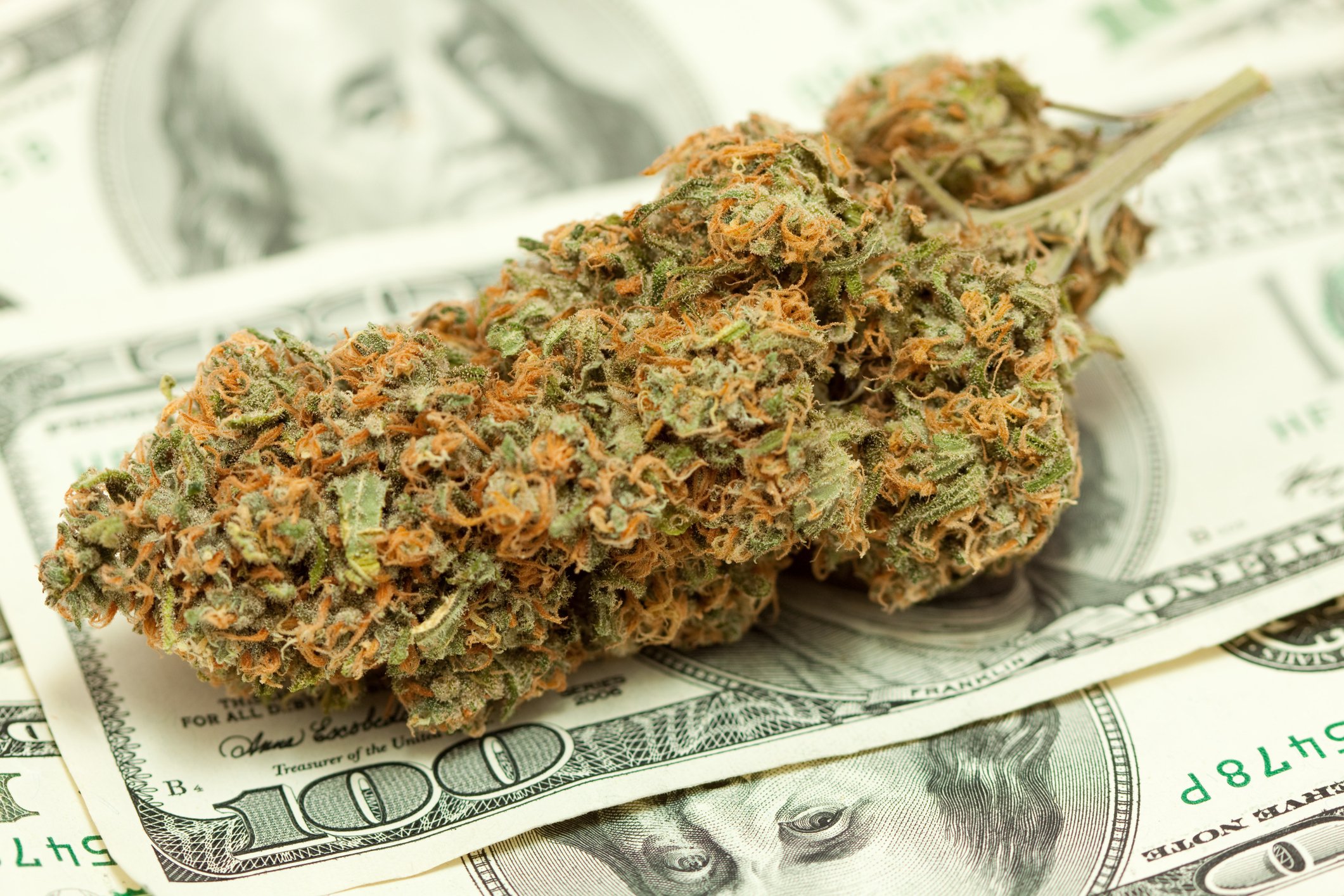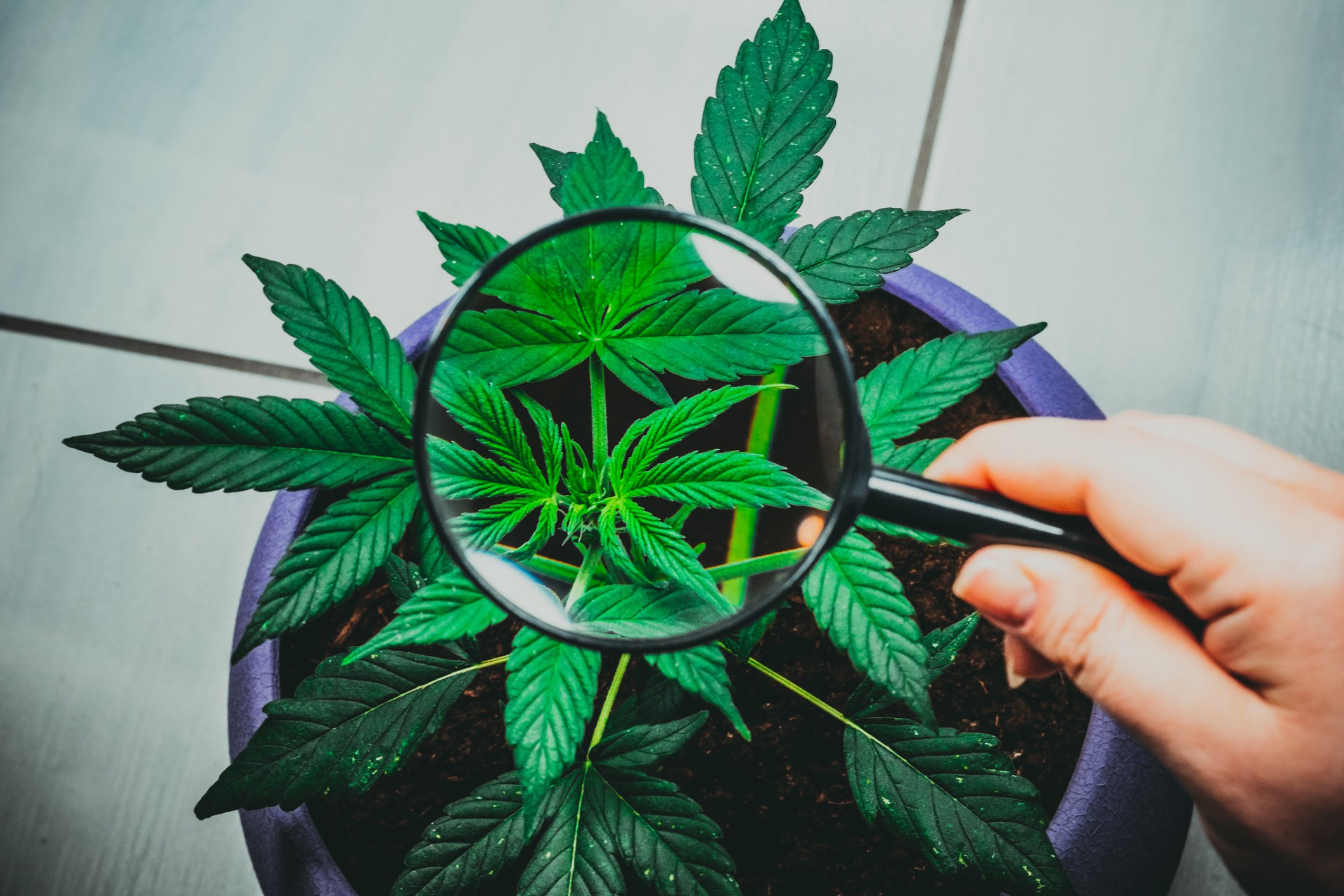Few industries have put a wider smile on investors' faces this year than marijuana. As recently as June, the average marijuana stock was higher by more than 330% over the trailing 12-month period, and if we look at the sales figures behind the legal weed industry, and favorability surveys, it's not hard to understand why investors are so optimistic.
Catalysts abound, but a well-defined ceiling still exists
In terms of U.S. sales, Marijuana Business Daily's newest report entitled "Marijuana Business Factbook 2017" forecasts a quadrupling of legal sales (medical and recreational) between 2016 and 2021. This would imply a U.S. market that's generating $17 billion in annual sales by 2021. Finding industries that can consistently grow around 25% to 30% per year over a five-to-10-year period is practically impossible, which is why investors have latched on so willingly to marijuana stocks.

Image source: Getty Images.
Of course, favorability is at the core of these rapid sales growth numbers. A Gallup survey released just a week ago shows that an all-time record 64% of respondents want to see cannabis legalized nationally. That's up from 60% last year, and just 25% in 1995, the year before California became the first state to legalize medical cannabis for compassionate use patients. If favorability toward pot continues to improve, the assumption is that the pressure on lawmakers to reschedule marijuana will be stepped up.
But things aren't perfect for marijuana investors. They have to contend with Attorney General Jeff Sessions, an ardent opponent of pot's expansion, as well as the superseding federal law that says marijuana is still an illegal substance with no recognized medical benefits.
The wheels just fell off the wagon for Insys Therapeutics
This bifurcation between select states and the federal government is what gives pot stocks their volatility. Last week this volatility was readily apparent for Insys Therapeutics (INSY +0.00%), which absolutely imploded.
Insys wound up 25% lower than where it began the week when all was said and done. It also ended the week behind closed doors, with the Securities and Exchange Commission having halted trading in the stock after the closing bell on Thursday on the basis of a request for "additional information." Let's take a look at what's gone so wrong for this once promising marijuana stock.

Image source: Getty Images.
Shares of Insys, which are nearly down 90% from their all-time high, have been adversely impacted by a scandal surrounding Subsys, the company's top-selling drug. Subsys is a fentanyl sublingual spray that the Food and Drug Administration (FDA) approved as a treatment for breakthrough cancer pain. The issue is lawsuits have alleged that the company's management and marketing team knowingly and willingly shopped Subsys to physicians for off-label use as a pain management drug. Specifically, it's alleged that Insys paid speaker fees and bribes to physicians to boost sales of Subsys, while at the same time using these speaker fees as a rouse to gain insurer coverage for the drug. Up to 80% of Subsys' more than $330 million in peak sales may have come from off-label use.
Last month, Insys announced that it had agreed to settle a lawsuit with the state of Massachusetts over its sales practices for $500,000. This settlement came on the heels of a lawsuit filing from New Jersey over the company's marketing practices.
However, things really came to a head this past Thursday when the company's billionaire founder, John Kapoor, was arrested. Based on the federal indictment filed in Boston, Kapoor was charged with engaging in conspiracies to commit racketeering, mail fraud, and wire fraud. These charges bring a new dimension to Insys' troubles as it could really put a damper on sales of Subsys, as well as the future sales of any other products in its portfolio or pipeline. There's also no ceiling on what sort of fines or sales restrictions Insys could face.

Image source: U.S. Department of Homeland Security via Flickr.
As salt in the wound, President Trump directed the Department of Health and Human Services to declare the opioid crisis a public-health emergency this past Thursday. There were more than 20,100 opioid-related overdose deaths in 2015, and the president's declaration opens the door for tougher regulations that could hurt the sales of companies like Insys.
Can Syndros save Insys?
At this point, the only thing that might be able to save Insys is its recently launched oral dronabinol solution, Syndros. This synthetic form of tetrahydrocannabinol (THC), the psychoactive component of cannabis, is approved to treat chemotherapy-induced nausea and vomiting (CINV), as well as anorexia associated with AIDS. Though CINV is a very crowded market, there are no drugs like Syndros out there, which could make it an intriguing option for patients and physicians. If everything were to go smoothly following its August launch, Syndros could see north of $200 million in annual sales within three to five years, in my opinion.
For what it's worth, Insys also has a sublingual buprenorphine spray that it recently filed a new drug application for with the FDA. This sublingual spray is designed to treat moderate-to-severe acute pain, but it'd fall under the scope of drugs that President Trump has suggested need more regulation. An approval here would further diversify Insys' portfolio, but it's not expected to be a significant sales contributor.

Image source: Getty Images.
What needs to happen for Insys' stock to find a bottom is for Subsys' murky outlook to clear a bit. If Wall Street and investors knew what sort of financial penalties or restrictions Subsys could face, then it would be much easier to evaluate the company. Knowing where the bottom is with Subsys' sales would help, too.
From this point, there are only two news events that'll get Insys back on track. First, a strong sales launch from Syndros could revitalize Insys. If Syndros can hit $200 million in sales by 2020, it could provide a near-complete replacement of the sales lost due to its Subsys scandal.
Secondly, we need to see Subsys' sales stabilize. Even if this stabilization occurs below $100 million in annual sales, Wall Street and investors are going to need to see an end to double-digit year-over-year sales declines. If both of things happen (and mind you, we won't know for a while), then Insys could be a bargain. But for right now, there are far more questions than there are answers.






